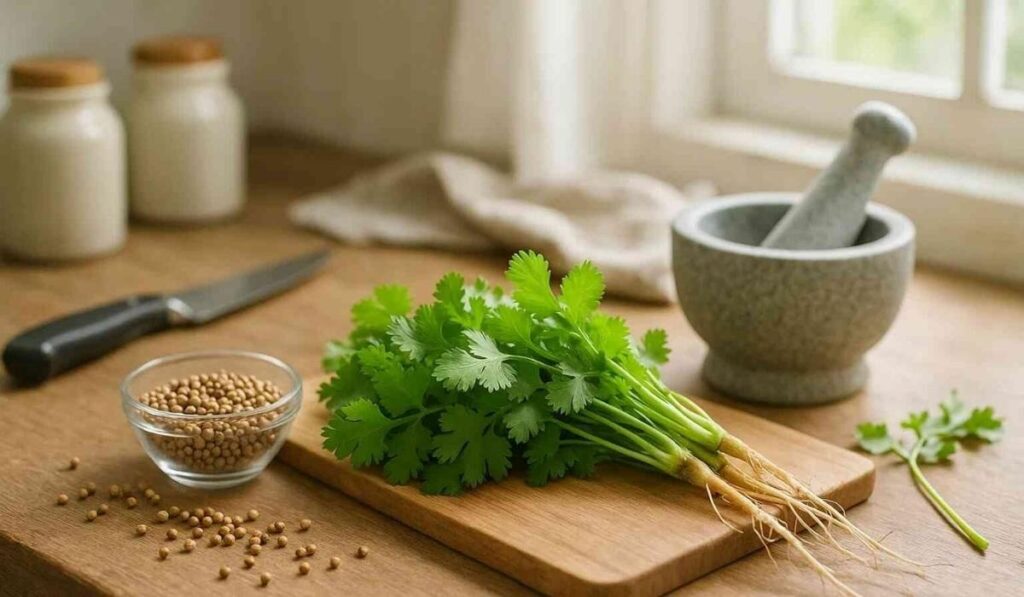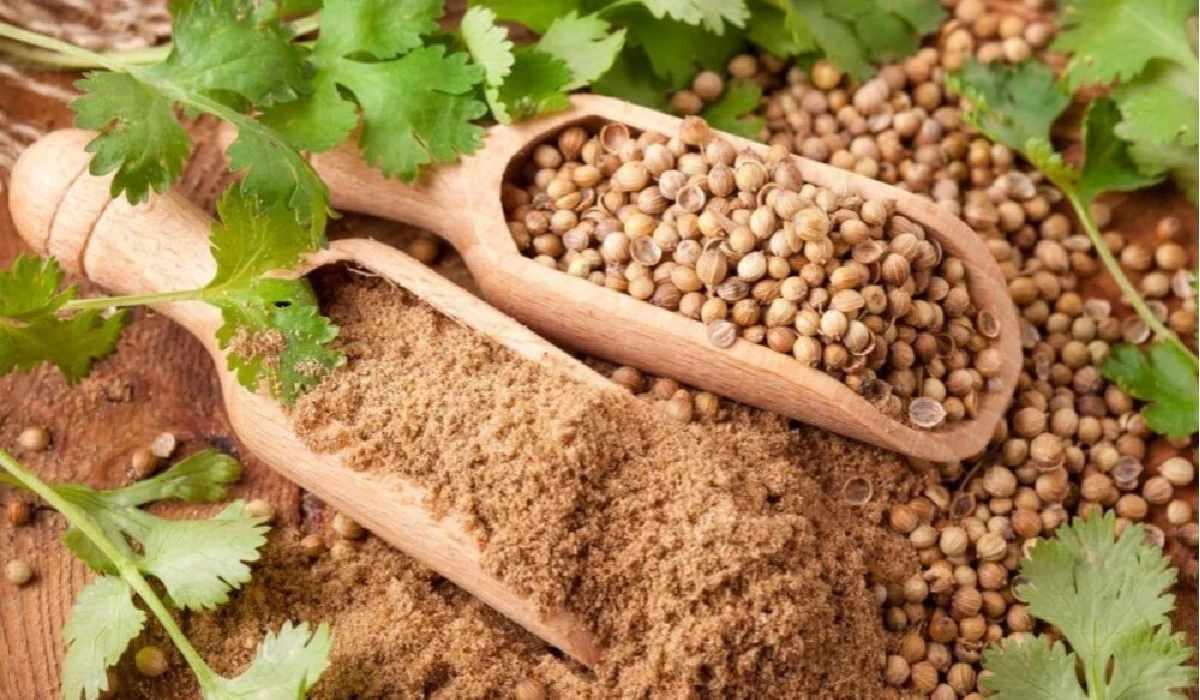Koriandri is one of the most fascinating and widely used natural spices in the world, carrying a long history of culinary value and medicinal significance. Derived from the seeds of the coriander plant, has been used for thousands of years in traditional cooking as well as ancient healing practices. What makes it truly unique is how perfectly it blends its aromatic power with therapeutic properties, giving it a dual role in households and herbal medicine traditions across different cultures. Its aroma is warm, earthy, and slightly citrusy, making it a perfect addition to countless recipes. At the same time, its chemical compounds offer soothing effects on digestion, inflammation, and overall well-being.
The Historical Background of Koriandri
Koriandri has one of the richest and oldest histories among culinary spices. Ancient civilizations such as the Egyptians, Greeks, and Romans appreciated not only for its flavor but also for its symbolic and medicinal value. Historians believe that coriander seeds were placed inside Egyptian tombs as part of burial rituals, highlighting their spiritual worth. In Greek medicine, it was used to treat digestive complaints and balance bodily humors. Roman cooks used it to create fragrant dishes and beverages, while physicians prepared mixtures to address fever, nausea, and swelling. Over time, its reputation spread along trade routes to Asia, the Middle East, and the Indian subcontinent, where it quickly became a cornerstone of cooking and healing traditions.
How Koriandri Is Cultivated and Processed

The journey of Koriandri begins on fertile farmland where the coriander plant grows best in mild climates with plenty of sunlight. The seeds are harvested once the plant turns brown, signaling that they have reached full maturity. After harvesting, the seeds are dried carefully to preserve their oils and prevent mold. Proper drying ensures that the seeds maintain their aroma and therapeutic potency. Once dried, they are cleaned, sorted, and often lightly roasted to enhance their flavor profile. Some regions prefer grinding the seeds into a fine powder, while others use them whole depending on the dish or medicinal preparation. can influence the aroma, taste, and healing properties of Koriandr.
Culinary Uses and Flavor Profile of Koriandri
Koriandri is celebrated in kitchens around the world for its versatile and unmistakable flavor. When used whole, the seeds release a gentle burst of citrus and earthiness that enhances slow-cooked dishes such as stews, curries, and broths. When ground, the spice becomes more intense, adding depth to spice rubs, marinades, and baked goods. In South Asian and Middle Eastern cuisines, is found in masalas, pickles, rice dishes, and bread seasoning. Mexican and Latin American recipes use it to create layered flavors in sauces and soups. Even European cuisine utilizes it in meat preparations, sausages, and hearty vegetable dishes. Its ability to pair well with other spices such as cumin, turmeric, ginger
Medicinal Benefits of Koriandri

Koriandri is not only a culinary treasure but also a time-tested medicinal herb valued for its wide range of health benefits. Traditional healing practices describe as a natural remedy for digestive discomfort, including bloating, indigestion, and gas. Its active compounds, such as linalool, have calming effects on the digestive system, promoting smoother digestion. also contains antioxidants that help neutralize harmful free radicals in the body, supporting long-term health. Many cultures use it as a mild anti-inflammatory agent to ease joint pain and swelling. It may support heart health by helping regulate cholesterol levels and improving metabolic function. In addition, is believed to have mild antimicrobial properties that assist the body in resisting infections.
Koriandri in Traditional Herbal Medicine
Across cultures, Koriandri has held a respected place in herbal medicine systems such as Ayurveda, Traditional Chinese Medicine, and various Middle Eastern healing practices. In Ayurvedic texts, is described as a cooling herb that balances the body’s internal heat, making it particularly useful for soothing digestive disturbances and reducing internal inflammation. It is commonly combined with other herbs to create teas and tonics that promote overall wellness. Traditional Chinese Medicine regards as an herb that supports circulation and helps stimulate appetite, especially during illness or weakness. In Middle Eastern herbalism, it is often included in blends designed to calm the nerves and support digestive strength. These traditional uses highlight how deeply.
How to Use Koriandri for Health at Home

Using Koriandri at home for natural health benefits is simple and accessible to almost anyone. One of the most common methods is preparing tea by steeping crushed seeds in warm water. This gentle drink helps ease digestion and soothe discomfort after meals. Ground can also be mixed with warm honey to create a calming natural remedy for bloating or heaviness. Many people incorporate it into their daily diet by adding it to soups, vegetables, lentils, and stews, allowing the herb to support digestion naturally. Another traditional method involves soaking the seeds overnight and drinking the infused water in the morning, which is believed to support metabolism and hydration. These practices are easy to follow, inexpensive.
The Aroma and Science Behind Koriandri
The distinct aroma of Koriandri is one of its most defining characteristics, loved by cooks and herbalists alike. The fragrance comes from essential oils contained within the seeds, with linalool being one of the most abundant. This compound is responsible for the slightly citrusy and floral scent that makes the spice instantly recognizable. From a scientific perspective, linalool and other phytochemicals contribute not only to the flavor but also to the medicinal effects of the herb. Studies suggest that these aromatic compounds may have calming effects on the nervous system, helping reduce stress and anxiety. They also play a role in antimicrobial activity, giving a protective quality when consumed regularly. By understanding the science behind the aroma.
Storage and Preservation of Koriandri

Proper storage is essential for maintaining the quality and potency of Koriandri. Whole seeds generally stay fresh for a longer period compared to ground powder, as their essential oils remain protected inside the seed shell. To preserve their aroma, it is best to keep them in airtight glass containers away from heat, moisture, and direct sunlight. Ground should be stored with even greater care because it loses potency more quickly once exposed to air. Many households choose to grind small batches at a time to ensure maximum freshness. If stored correctly, can retain its flavor and medicinal properties for months, making it a dependable and long-lasting ingredient in both kitchens and natural medicine cabinets.
Why Koriandri Remains an Essential Spice Today
Koriandri continues to play an important role in modern kitchens and herbal traditions because of its unmatched versatility, rich history, and wide-ranging benefits. It bridges the gap between flavor and wellness in a way that few ingredients can. For cooks, it brings depth and warmth to countless dishes. For those interested in natural health, it provides gentle but effective support for digestion, circulation, and relaxation. Its cultural significance remains strong, and its presence in global cuisine ensures that it will remain relevant for generations to come.
Frequently Asked Questions
1. What is Koriandri made from?
- Koriandri is made from the dried seeds of the coriander plant. These seeds are harvested, dried, and sometimes ground into powder for use in cooking and herbal remedies.
2. How is Koriandri used for digestion?
- Koriandri is often consumed as tea, soaked water, or added to food to help ease bloating, gas, and discomfort. Its natural compounds support smoother digestion.
3. Can Koriandri be used in both sweet and savory recipes?
- Yes, Koriandri has a flavor that works well in savory dishes like curries and broth as well as in sweet recipes such as spiced cakes, cookies, and bread.
4. Is ground Koriandri better than whole seeds?
- Both forms are useful, but whole seeds stay fresh longer. Ground Koriandri offers stronger flavor but loses aroma if stored for too long.
5. Does Koriandri have any side effects?
- Koriandri is generally safe when used in normal culinary amounts. Very large quantities may cause sensitivity in some individuals, but this is uncommon.









